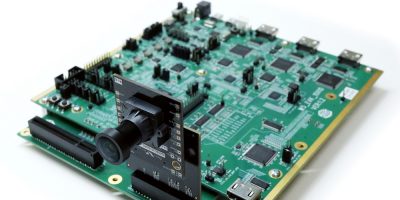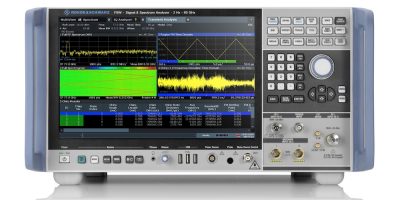OmniVision Technologies’ OX03C10 automotive image sensor is combined with Geo Semiconductor’s automotive camera video processors (CVPs) in an automotive viewing camera.
The OmniVision’s OX03C10 is claimed to be the only automotive image sensor available that combines a large 3.0 micron pixel, high dynamic range (HDR) of 140dB for minimised motion artefacts, and the highest LED flicker mitigation (LFM) performance. The collaboration allows camera designers to process images captured by two image sensors with full HDR and LFM, using a single Geo CVP.
Intended for use in rear view cameras (RVCs), surround view systems (SVS) and e-mirrors, the image sensor takes advantage of the Geo GW5 CVP family’s ability to process 140dB HDR images with full LFM at 60 frames per second. The GW5 family’s advanced local tone mapping enables it to make optimal use of the OX03C10’s HDR and LFM image captures, adds OmniVision.
Using the GW5’s ability to process the captures from two image sensors simultaneously, with the HDR and LFM performance of OmniVision’s OX03C10 allows SVS camera designers to get the highest possible image quality without the added system bill of materials cost, complexity and power consumption of two CVPs, explains Geo.
The collaboration allows automotive designers to create the highest quality viewing cameras, across all lighting conditions, and in the presence of flickering LEDs from headlights, road signs and traffic signals, says the company.
This sensor’s integration of OmniVision’s HALE (HDR and LFM engine) combination algorithm provides the highest HDR and LFM performance simultaneously, claims Geo and the Deep Well dual conversion gain technology significantly reduces motion artefacts. Additionally, OmniVision’s split-pixel LFM technology with four captures provides the best performance over the entire automotive temperature range, claims the company. The OX03C10 is also the first viewing image sensor with HDR and LFM that can deliver 1920x1280p resolution at a frame rate of 60 frames per second, enabling faster camera view switching for drivers. The power consumption of the OX03C10 is 25 per cent lower than that of the nearest 2.5MP LFM image sensor, claims OmniVision and it has the industry’s smallest package size. As a result, cameras can continuously run at 60 frames per second and be placed in even the tightest spaces.
OmniVision’s PureCel Plus-S stacked architecture enables pixel performance advantages in the OX03C10 over non-stacked technology, in addition to a smaller die and lower power consumption. For example, 3D stacking allows OmniVision to boost pixel and dark current performance, resulting in a 20 per cent improvement in the signal-to-noise ratio (SNR) over the prior generation of its 2.5MP automotive viewing sensors.
The GW5 CVP family integrates an innovative HDR image signal processor (ISP) that supports the simultaneous 140dB HDR and industry’s highest LFM output of the OX03C10, providing great image detail in scenes with both bright and dark areas. Additionally, the GW5 includes Geo’s fifth-generation eWARP geometric processor to de-warp fish eye lenses exceeding a 180 degree wide field of view. The GW5 reduces system complexity and cost by requiring no external DDR memory and supporting dual sensor input that can process the captures from two OX03C10 sensors simultaneously, continues Geo.
OmniVision’s OX03C10 image sensor is available for sampling, and GEO’s GW5 CVP family is in mass production now. Both companies’ devices provide advanced ASIL functional safety and AEC-Q100 Grade 2 certification for automotive applications.







